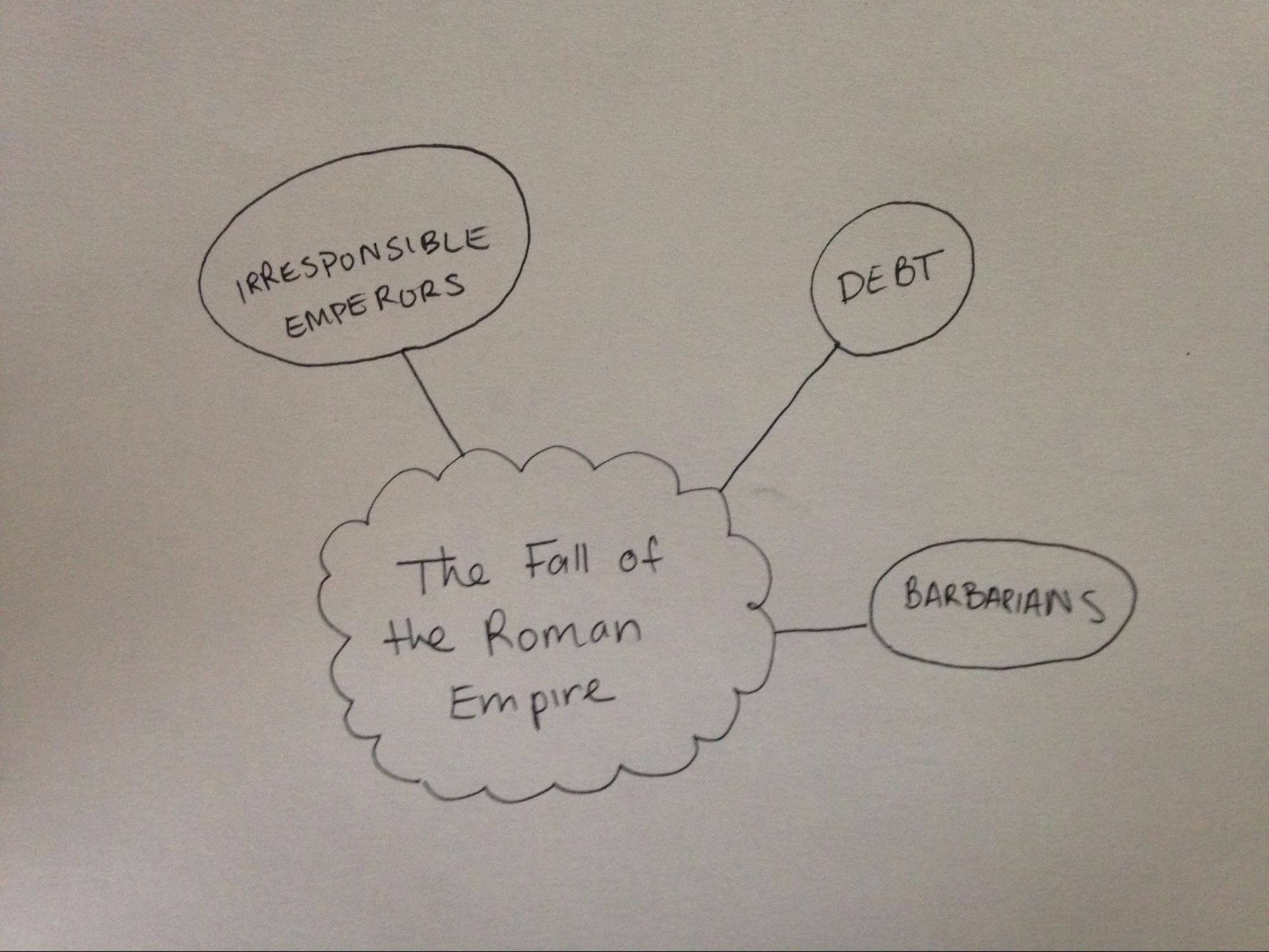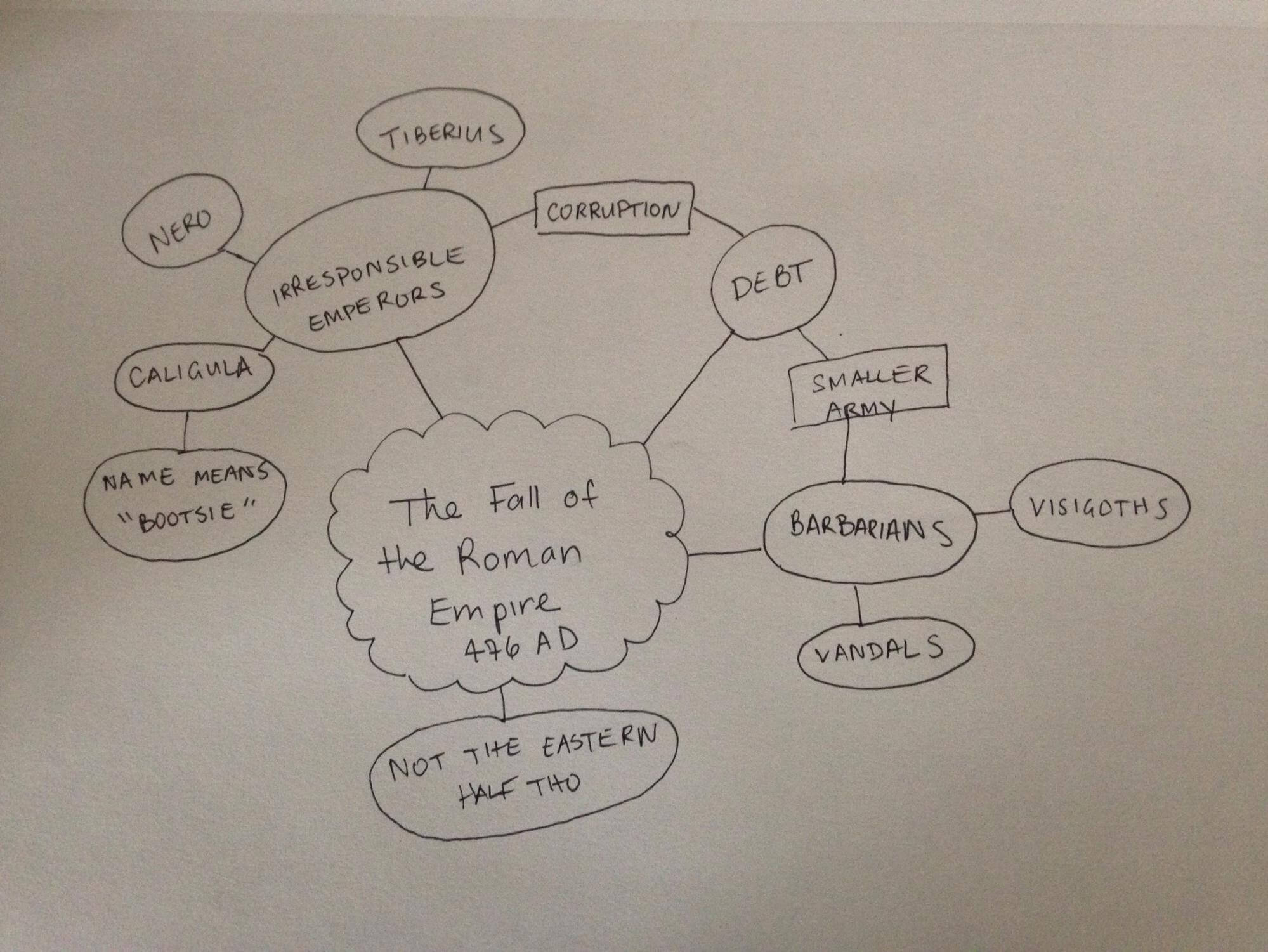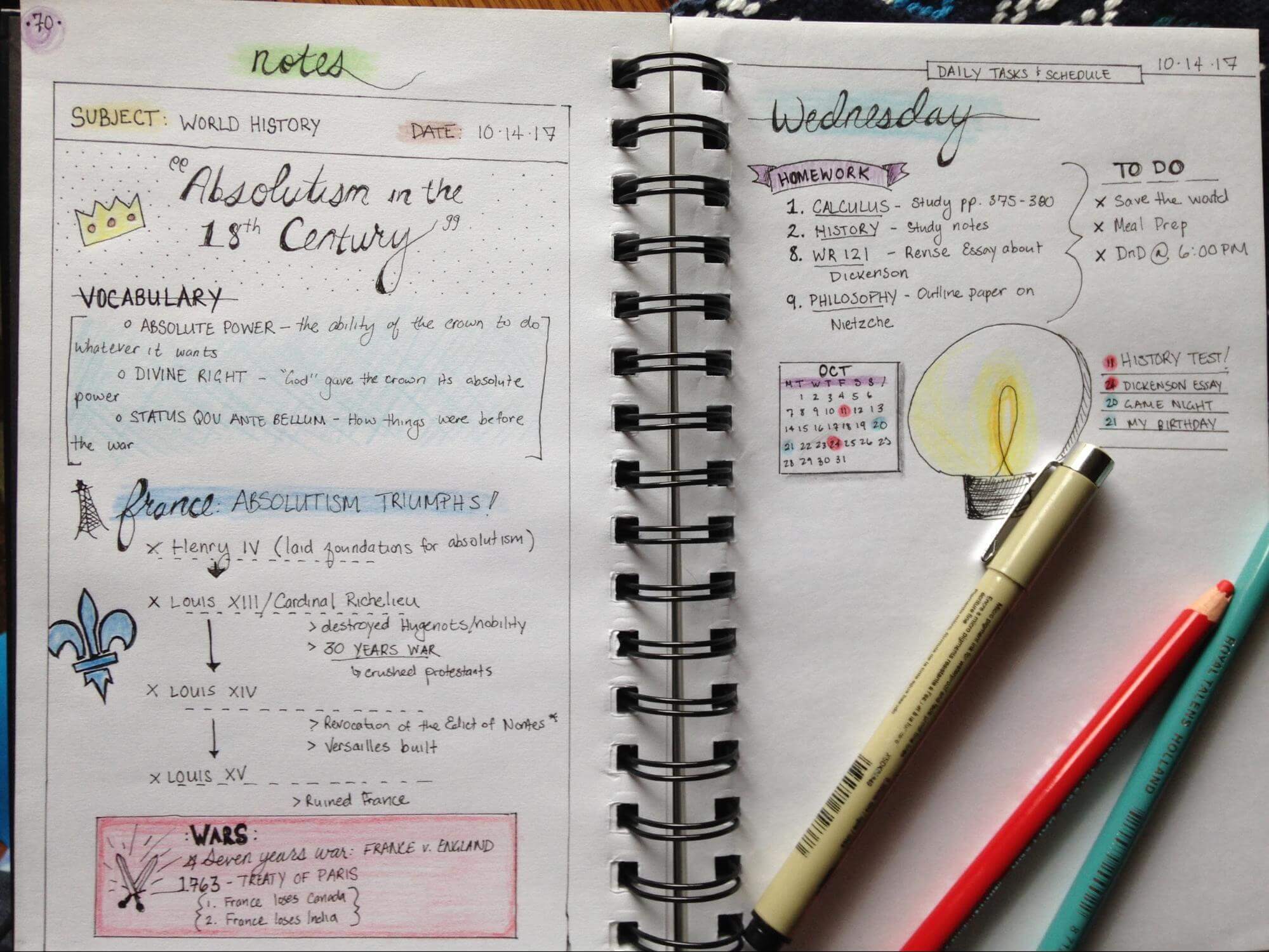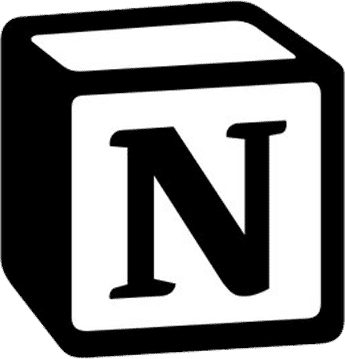Heading off to college is kind of like leveling up in a video game. In high school, the tests and courses were smaller bosses that you could take down with low-level equipment. Now that you’re in college, you’re going to need to upgrade some of those items you’re taking with you if you want to succeed. This is a whole new adventure, my dude.
One of the tools you have at your disposal is your notes. Maybe in high school you were pretty good at taking notes, and now you just need to upgrade them a little bit. Maybe you’re feeling like I did in college, and you’ve realized you’ve never properly learned how to take notes.
Never fear! Your guide to taking awesome, effective notes is finally here. Your days of looking back at what you scribbled down in class and trying to decipher useful information from them before a test are over.
In this guide, we’ll talk about how to prepare yourself to take good notes in class, introduce some popular techniques for taking notes, and cover the best ways to get the most out of your notes after class.
Prepare Well Before You Get to Class
“The most important single factor influencing learning is what the learner already knows” – David Ausubel
Before you even think about heading to class, make sure that you’ve read (or at least skimmed) all pre-assigned reading from your professor. Even if you don’t have assigned reading, try and familiarize yourself with the topic before you get to class so you know what to expect.
A 2004 study by Spies and Wilkin found that the law students who were responsible for reading a legal case before they got to class displayed a greater understanding of the learning materials than students who were not expected to prepare before class.
Also, don’t forget to pack all the things you need to learn effectively. Make sure you have multiple pencils (or some backup lead), a notebook, pens, highlighters, sticky notes, your textbook, and your laptop.
Don’t forget water! It’s tempting to bring coffee or some other form of caffeine to class. Try to stick to water and consume caffeine intelligently. While coffee doesn’t dehydrate you, and coffee in moderation certainly helps you focus and stay alert, caffeine dependency interferes with your quality of sleep and impairs mental function, ultimately impacting your ability to pay attention during class.
Lastly, grab a snack before you head out the door for class. Avoid high-salt or high-sugar options, and aim for a “complete snack” that includes fat, protein, and carbs.
Apples and peanut butter, crackers and cheese, or even certain power bars are good options. These snacks will leave you feeling full for longer, ensuring that you won’t be distracted by how much you want a burrito in the middle of your professor’s lecture about the structure of a cell.
The Note-Taking Mindset
The other thing you should get in order before coming to class is your brain. I know that when I’m in a good mood and have a positive attitude, I’m way more likely to learn.
I hate math. I suck at math. I’m like, the worst math student ever. I failed my high-school algebra courses three times. That’s how bad at math I am!
When I got to college, my college-level algebra course was the one thing holding me back from actually finishing my associate’s degree. I decided that I was going to pass the class.
So, I showed up every day with a (more or less) positive attitude, made an effort to make friends with a classmate I could study with, and paid attention to the lecture, working out problems myself as we went along.
In the end, I may not have gotten an A in the course, but I did get a B…which was the highest math score I had gotten since elementary school.
Moral of the story? Attitude is everything.
Quick tip: If you notice during class that your professor has mentioned the same fact twice or more, or has repeated a fact that was talked about in the previous lecture, make a note to yourself. Circle it, underline it, something to tell your brain to pay attention. It’s definitely going to be important later. Keep an eye out for repetition.
The 6 Best Note-Taking Systems
Now that you’re ready to take notes, let’s talk about some popular note-taking techniques. Everyone has a slightly different way that they learn, and certain subjects lend themselves to different styles.
Don’t be afraid to experiment with different techniques to find one that’s right for you!
Structured: The Outline
This is for people who like simplicity. It’s one of the easiest ways to take notes, and it comes pretty naturally to most people.
When taking your outline notes, start by choosing four or five key points that will be covered in your lecture. Beneath those points write some more in-depth sub-points about each topic as the professor covers them.
If you’re taking outline notes by hand, be sure to leave enough space on each page so that you have plenty of room for all your sub-points. Or, you can take them on a computer and simply rearrange them as you go in your text document.
This is a great, simple approach to taking notes. It’ll help you follow along and pay attention during class, but it can be overwhelming to review these notes later.
To aid in reviewing these kinds of notes, try to read each main point and summarize it yourself without looking too much at your notes. Use your notes to test yourself on how much you actually know rather than simply rereading them over and over.
For Review: The Cornell Method

The Cornell Method is a pretty good way of dividing up your notes if you’re looking to get the most out of your review time.
In this method, you divide your paper into three sections: notes, cues, and summary.
Your notes section is for the notes you take during class. You can structure them however you like, but most people like to use the outline method.
Write your cues section either during or directly after class. This section can be filled out with main points, people, or potential test questions. Use this section to give yourself cues to help you remember larger ideas.
You can write your summary section directly after class, or later when you’re reviewing your notes. Use this section to summarize the entire lecture.
Keep your cue and summary sections as simple as possible. However, feel free to fill up the notes section with doodles, diagrams, page references, and whatever else you need to properly represent the material presented in class.
In-Depth: The Mind Map

The mind map is a great way of taking notes for specific types of subjects. Class subjects like chemistry, history, and philosophy that have interlocking topics or complex, abstract ideas are perfect for this method. Use the mind map to get a handle on how certain topics relate, or to go in-depth with one particular idea.
For instance, if you’re attending a lecture about the Fall of the Roman Empire, start with that concept in the center and then draw “nodes” of all the things that led to Rome’s fall as your professor lists them. Things like debt, irresponsible emperors, attacks from the surrounding barbarian tribes, and so on.
Later, to review, go more in-depth and add smaller sub-concepts onto each branch. Things like dates, formulas, supporting facts, and related concepts make for great branches. In the end, it might look something like this:

Holistic: Flow Notes
This note-taking method is great for students looking to maximize their active learning within the classroom and minimize their review time later. The point of flow notes is to treat yourself like the student you are, and not a lecture-transcribing machine.
Jot down topics, draw arrows, make little doodles and diagrams and graphs. Go crazy. Engage with the material. Try to actively learn as you’re writing.
Perhaps you’re in history class and your professor is talking about the Battle of Hastings, and you remember that it happened in 1066 and that there were other things happening across the globe in the year 1066, too. Write those facts down and draw connections.
The sky’s the limit on this one. It’s great for people who hate rules.
Caution: while this method is great for learning in the moment, it can be difficult to review flow notes later. If you’re an auditory and visual learner and retain a lot of what you learn from your lectures, maybe that works fine for you. If not, try pairing your flow notes with the Cornell Method to make them easier to review for tests.
Easy: Writing on Slides
Let’s be honest, this is note-taking for lazy people…and there’s nothing wrong with that!
It’s super effective, and it’s easy.
If your professor is kind enough to provide you with the slides that they’re using in their lectures, go ahead and download the files and print them out at the computer lab. The slides give you a leg up on the outlining process. The professor already did the work for you! All you have to do is take notes and expand on key concepts already presented in the slides.
It works great, too, because later you can look at the slide and more or less remember what the professor was talking about when they reached that slide. It’s like having a step-by-step walkthrough of the lecture, and you hardly had to do a thing to get it!
Visual: Bullet Journaling

This is my personal favorite. It’s the note-taking style I use most often, both in and out of the classroom.
If you’re super into aesthetics, like to doodle, or are a particularly visual learner, this method might be best for you.
When you write in your bullet journal, you turn a blank page into a beautiful representation of your thought process. Try using it to combine different aspects of other note-taking styles.
You can have one page that’s dedicated to mind maps, another that’s dedicated to your flow notes, and even sneak in a class schedule or a doodle of Sonic the Hedgehog in somewhere. It’s your bullet journal. I don’t know, do what you want! It’s your journal!
This method does have drawbacks. It can be difficult to take notes quickly. The goal of bullet journaling is to keep your journal organized and attractive, which can be hard when you’re scribbling down information as fast as you can.
One way to combat this is to take notes during class in an outline or using some other method, and then organize them later in your bullet journal as a form of review.
Need ideas for what your journal should look like? Just go on Pinterest or google ‘BuJo ideas’, or, specifically, ‘BuJo ideas for students’, and knock yourself out. There’s tons of stuff out there!
Should You Use Your Computer to Take Notes?
So, should you use your laptop to take notes, or write them longhand? Students, scientists, and teachers have been debating this ever since laptops were allowed into classrooms. The short answer? No.
The longer answer is a bit more complicated.
In a study published in 2014, students who took notes on a laptop were more likely to simply copy down what their professor said verbatim.
This actually impaired their learning because their brains were processing the information shallowly, instead of taking larger concepts and condensing them into note-form. These students performed poorly on conceptual tests compared to others who took notes longhand.
Not only that, but another study published in 2010 showed that most students who take their laptops to class are only working on class-related material about 58% of the time.
The other 42% is taken up by going online, working on different assignments, or playing Space Invaders. These students were more likely to fall off task and were less satisfied with their education when asked about it.
The studies concur: using laptops to take notes in class might not be the best choice.
How You Use Your Computer Matters!
Of course, it all depends on how you use your computer. If you’re a self-disciplined person, you might benefit from having your laptop to take verbatim notes you can study extensively later.
One history class I took in college was actually better because we had access to our laptops, and could quickly check facts for our professor. They were put to good use during discussion times, since students could do a tiny bit of googling before they contributed their thoughts.
In short: it’s up to you what tool you use to take notes. You’re responsible for your education. Just make sure that the tool you’re using is a tool, and not a distraction. If you find yourself nipping out of your note-taking document to play Sims 3 or scroll through your Facebook feed, maybe switch to taking longhand notes.
Looking for a great app to take and organize your notes? We recommend Notion:
Notion is one of the most flexible and powerful apps I've ever used. It can be a note-taking app, but there's also a database feature with multiple views (including Trello-style kanban boards and calendars) the ability to make anything into a template, and great collaboration features. At CIG, we use it for all of our team documentation, and I also manage every YouTube video I make with it.
The Best of Both Worlds
Prefer writing by hand, but still want to be able to access your notes on your computer and are tired of buying notebooks just so you can throw them away later? There’s a solution for that.
Rocketbooks are a super cool piece of new note-taking technology. The notebook is completely reusable. Simply take your notes, scan them using your phone and the Rocketbook app, and then, depending on which notebook you have, wipe it clean with a damp cloth to re-use it virtually indefinitely.
If you’re using the Rocketbook Wave, you can just throw it in the microwave and nuke it up to three times. Voila! You’ve got a reusable notebook, and digital notes that you didn’t have to take using a tablet and stylus or type out on your laptop.
Want to learn more about the Rocketbook? Check out our full review.
I’d never heard of these before researching this article, and let me tell you, they sound like a great option for students looking to lighten their backpack load. They’re good for the environment, and they’ll save you some money and space since you’re not buying a new notebook every single term.
Need help keeping your notes (and life) organized? Check out our guide to staying organized in college.
Get the Most Out of Your Notes

Phew! How are you doing? Good? That was a lot. Here’s one last thing:
Now that you’ve got your notes and class is over, how do you get the most out of them? There are three great ways to maximize your notes:
- Review, review, review. Make sure that you review your notes within the first 24 hours after your lecture. This cements everything you heard and learned in your brain so it won’t fall out of your head later.
- Review a small portion of your notes every day. Don’t try to cram before your test. Reviewing over a long period time ensures that what you’ve learned will stick, and improve your recall.
- As you’re doing assigned reading or research, have your notes on hand and notice repetition. If your professor covered it in class and it’s in your assigned reading, there’s a good chance it’ll be on the test.
Ultimately, we could talk about notes and note-taking techniques all day. But the most important thing to understand is that note-taking is a skill. Everyone’s brain works a little differently, and what might work for me won’t necessarily work for you. Take notes often, experiment, and find out what you like.
You made it to the end! Now, it’s up to you. Commit to the process, pay attention in class, and don’t forget to review. You’ve got this, dude.
Want to take notes by hand without sacrificing the convenience of digital organization? Check out our guide to the best note-taking apps for iPad.
Image Credits: woman taking notes, girl walking, student writing, layout of hat and pens, typing, distracted on phone, studying in library



